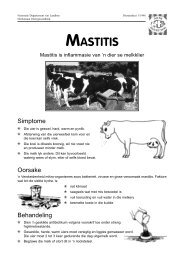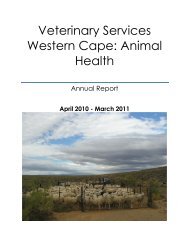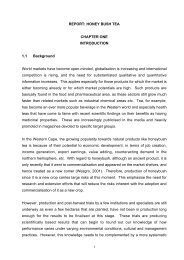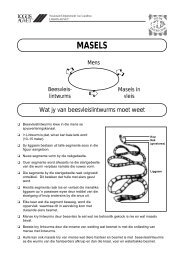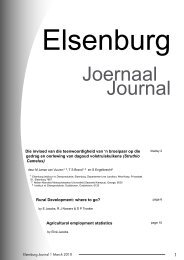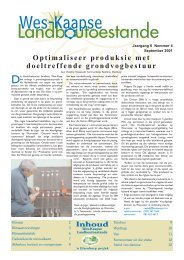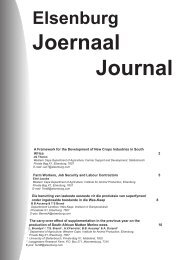The PROVIDE Project Standard Computable General Equilibrium ...
The PROVIDE Project Standard Computable General Equilibrium ...
The PROVIDE Project Standard Computable General Equilibrium ...
You also want an ePaper? Increase the reach of your titles
YUMPU automatically turns print PDFs into web optimized ePapers that Google loves.
<strong>PROVIDE</strong> <strong>Project</strong> Technical Paper 2003: 3 October 2003<br />
QENTD = comentconst * QENTDADJ . (E4)<br />
c<br />
c<br />
Associated with any given volume of enterprise final demand there is a level of expenditure<br />
defined by<br />
⎛<br />
⎞<br />
VENTD = ⎜ ∑ QENTD<br />
c<br />
* PQDc<br />
⎟ . (E5)<br />
⎝ c<br />
⎠<br />
If QENTDADJ is made flexible, then comentconst ensures that the quantities of commodities<br />
demanded are varied in fixed proportions; clearly this specification of demand is not a<br />
consequence of a defined set of behavioural relationships, as was the case for households,<br />
which reflects the difficulties inherent to defining utility functions for non-household<br />
institutions. If VENTD is fixed then the volume of consumption by enterprises (QENTD) must<br />
be allowed to vary, via the variable QENTDADJ. <strong>The</strong>n total enterprise expenditure (EENT) is<br />
defined (E6) as the sum of expenditure by enterprises on consumption demand at current<br />
prices, plus transfers to households (hoentconst) plus corporation tax, where tye is the<br />
direct/income tax rate and TYEADJ the tax rate scaling factor<br />
⎛ ⎞ ⎛ ⎞<br />
EENT = ⎜∑QENTDc*<br />
PQDc⎟+<br />
⎜∑hoentconsth⎟<br />
⎝ c<br />
⎠ ⎝ h<br />
⎠. (E6)<br />
+<br />
( TYEADJ * tye*<br />
YE )<br />
<strong>The</strong> demand for commodities by the government for consumption (QGD) is also defined<br />
(E7) in terms of fixed proportions (comgovconst) that can be varied with a scaling adjuster<br />
(QGDADJ)<br />
QGD = comgovconst * QGDADJ . (E7)<br />
c<br />
c<br />
Associated with any given volume of government final demand there is a level of expenditure<br />
defined by<br />
⎛<br />
⎞<br />
VGD = ⎜ ∑ QGDc<br />
* PQDc<br />
⎟ . (E8)<br />
⎝ c<br />
⎠<br />
Hence, total government expenditure (EG) can be defined (E9) as equal to the sum of<br />
expenditure by government on consumption demand at current prices, plus transfers to<br />
households (hogovconst) that can be adjusted using a scaling factor (HGADJ) and transfers to<br />
enterprises (entgovconst) that can also be adjusted by a scaling factor (EGADJ)<br />
⎛ ⎞ ⎛ ⎞<br />
EG = ⎜∑QGDc* PQDc⎟+<br />
⎜∑hogovconsth*<br />
HGADJ ⎟<br />
⎝ c<br />
⎠ ⎝ h<br />
⎠<br />
+<br />
( entgovconst * EGADJ )<br />
As with enterprises there are difficulties inherent to defining utility functions for a<br />
government. Changing QGDADJ, either exogenously or endogenously, by allowing it to be a<br />
(E9)<br />
© S. McDonald<br />
27





